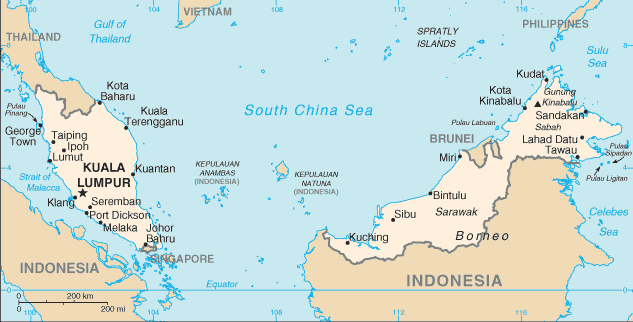
Malaysia
National implementation of the ASEAN Agreement on Disaster Management and Emergency Response (AADMER)
Overview of the DRM System
Malaysia has a Type C DRM System – A specific law on disasters, focused on emergency preparedness and response to natural hazards, some technological hazards; and may have elements of early warning and recovery. These laws tend to be found in countries (i) with low hazard exposure, or (ii) with higher exposure but effective risk governance through sectoral laws, or (iii) with higher exposure but limited law-making and institutional capacity due to poverty and/or conflict.
Legal framework
Malaysia has an administratively-established DRM system comprising the Natural Disaster Management and Relief Committee, established in 1972 under the National Security Council (NSC) Directive No. 20. It recently reviewed the preparedness and response aspects of its DRM system and passed the Civil Defence (amendment) Act 2016.
The 2016 law, which complements the existing system, makes important changes to the Civil Defence Force Act 1951. It is now a key responsibility for the Malaysia Civil Defence Force (MCDF) under the patronage of the Prime Minister’s Department along with the National Disaster Management Agency (NADMA) to adapt a multi-hazard approach in the disaster risk management. The MCDF is one of the responders besides the Royal Malaysian Police & Fire and Rescue (RMPFRD) department. This includes the implementation of Community-Based Disaster Risk Reduction (CBDRR) to pursue public involvement in DRR effort.
Key national institutions
The new National Disaster Management Agency (NADMA), was created in 2015 as a separate body, having been part of the National Security Division of the Prime Minister’s Department for many years. The new law and the continuing NSC Directive are relatively comprehensive, in that together they establish national, district and local committees and their responsibilities in three levels of disaster, now moving towards a fourth level, although the system remains focused on preparedness and response.
Since NADMA took over the DRM portfolio from NSC in 2015, it has been consulting with stakeholders towards drafting a new disaster risk management law.
Sub-national structures
Under the administratively-established DRM system, sub-national structures are:
1. State Disaster Management and Relief Committee
2. District Disaster Management and Relief Committee
3. Since the 2016 reforms, small units are being placed at the community or village level, making a fourth tier.
Funding and budget
Malaysia’s funds for disaster risk management are budgeted annually through the Economic Planning Unit (EPU) and also at the state and district level.
NADMA also has a specific fund for disaster risk management.
Integration of the AADMER and AHA Centre
The AHA Centre National Focal Point is the NADMA.
Provision on international and regional assistance
The Central Disaster Management and Relief Committee (CDMRC)/NDMA, is authorised “To get expertise assistance from local authority or foreign country to help in managing a disaster.” (NSC Dir No. 20 Appendix A Art. B (5))
The Civil Defence (Amendment) Act 2016, allow that members of the Civil Defence Force may be required to serve outside Malaysia, and may also be attached to a civil defence force or organization outside Malaysia (Arts. 4 E and 4F).

Laws, policies, plans and other resources
Laws, policies and plans
1951 Civil Defence Act (Revised 1979)
1964 Emergency (Essential Powers) Act
1979 Emergency (Essential Powers) Act
1997 NSC Directive 20 – Policy and Mechanism of National Disaster Management and Relief
1998 Fire Services Act
1998 Prevention and Control of Infectious Diseases Act
2016 Civil Defence (Amendment) Act
2016 National Security Council Act
National reports
2009 National Report on Implementation of the Hyogo Framework for Action
2013 National Report on Implementation of the Hyogo Framework for Action
2017 National Report for Sendai Framework Data Readiness Review
11th Malaysia Plan (Chapter 6)
![]()

